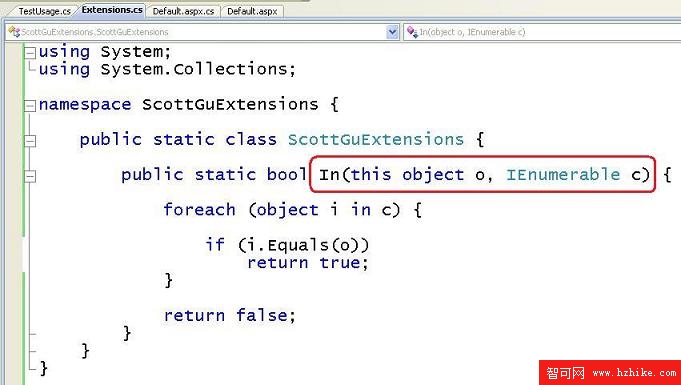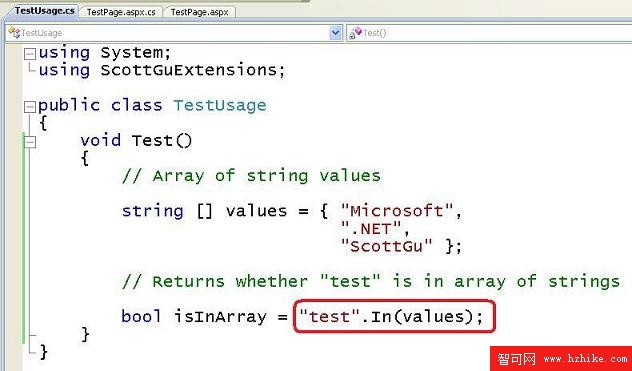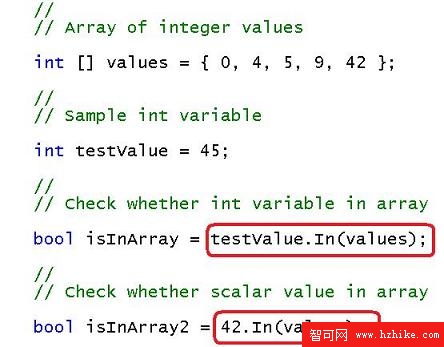先看下ScottGu對In的擴展:

調用示例1:

調用示例2:

原文地址:New "Orcas" Language Feature: Extension Methods(http://weblogs.ASP.Net/scottgu/archive/2007/03/13/new-orcas-language-feature-extension-methods.ASPx)
很多介紹擴展方法的也大都使用"In"作為例子,但很少有人再深入想一步。個人感覺這個In擴展的不夠徹底,試看如下代碼:
public static void Example1()
{
bool b1 = 1.In(new int[] { 1, 2, 3, 4, 5 });
bool b2 = "Tom".In(new string[] { "Bob", "Kitty", "Tom" });
}
//ScottGu In擴展
public static bool In(this object o, IEnumerable c)
{
foreach (object i in c)
{
if (i.Equals(o)) return true;
}
return false;
}
每次使用 In 時都要聲明一個數組(或集合),有點麻煩,如果像下面這個樣子調用應該比較簡單一些:
public static void Example2()
{
bool b1 = 1.In(1, 2, 3, 4, 5);
bool b2 = 1.In(1, 2, 3, 4, 5, 5, 7, 8);
bool b3 = "Tom".In("Bob", "Kitty", "Tom");
bool b4 = "Tom".In("Bob", "Kitty", "Tom", "Jim");
}
感覺如何,是否有點類似SQL中的In?